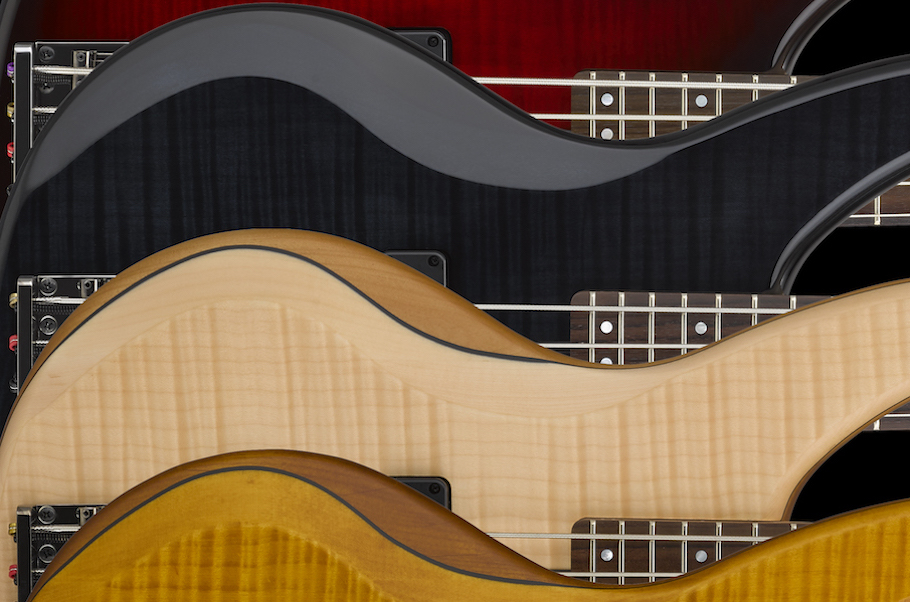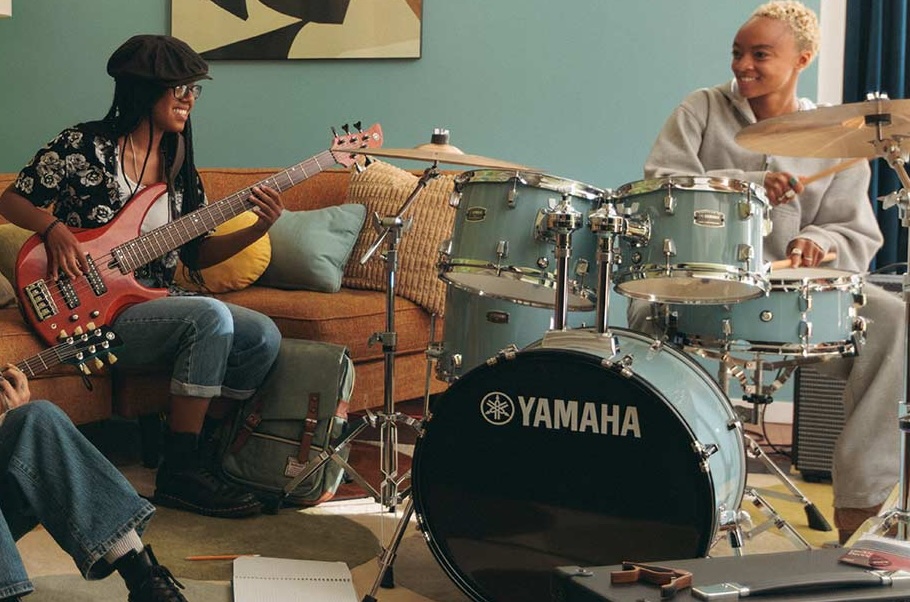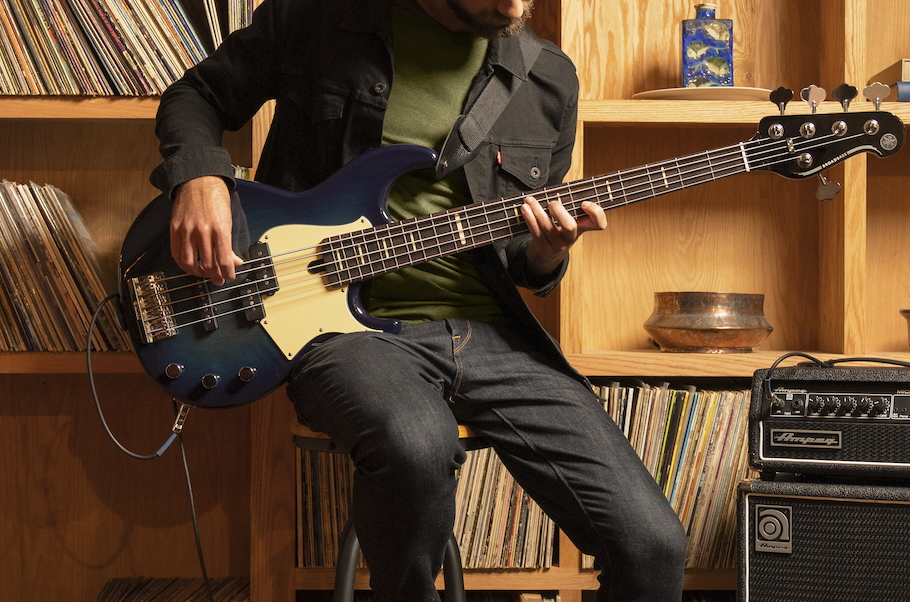How To Think Like Your Bass Heroes But Sound Like Yourself
Imitate, then innovate your way to greatness.
Most of us fall in love with bass after hearing or seeing someone else play. After that initial life-changing rush that makes us say, “I want to do that!” we might pick up the instrument and decide to sound as much like our hero as we can. The path to greatness, however, lies in finding your own unique sound. How exactly do you do that? By dissecting your heroes’ sound — their tone, gear, technique, harmonic tendencies and influences — and putting your own spin on them.
MINDSET MATTERS
Before you rush out and buy your idol’s signature bass, learn how they think; watch and read interviews to understand how they got where they are. Thanks to YouTube, there are countless videos where great musicians like Victor Wooten and Nathan East articulate the lessons they’ve learned, and understanding their mindset can help you decide what works for you and what doesn’t. As you search for your own voice, learn from the things that helped make them successful (high standards, an outgoing personality and a strong work ethic, for example), but avoid making the same mistakes they did.

WHAT’S THAT SOUND?
You don’t have to have the exact same gear as your heroes, but if emulating their sound is important to you, hearing yourself through similar equipment can be helpful. Figure out what it is about them that catches your ear and then do your best to recreate that sound. Every element of a player’s tone — the bass, the strings, the onboard preamp (or lack thereof), the amp and speaker cabinet, their effects — contributes to the sonic recipe that works its magic on you.
Know also that your gear has a big impact on your technique: Veterans like John Patitucci understand that string height and string spacing change the way you play. Going on this journey will help you find the gear that works best for you, even if it’s not the same equipment your hero uses.
GET TECHNICAL
Does your hero play melodies with a pick like Peter Hook? Do they have a lightning-fast right-hand technique like Billy Sheehan? Do they have a clean, blazing fingerstyle sound like Vincen García? Learning your favorite player’s favorite techniques will help you understand what they consider appropriate for the genre (or genres) they play most. If they step out of their comfort zone, notice what made them try a different approach. Their habits and their experiments will help you understand how they view their instrument, and it’ll give you a chance to choose what works for you. As you try their techniques, see what comes easily and what’s worth working on.


HARMONIC AND RHYTHMIC TENDENCIES
Think of a player you love, and chances are you’ll be able to recognize their sound within just a few seconds. Knowing why and when your idols make certain musical decisions (and how their styles have changed over time) will clarify how they think of harmony, melody, tempo, rhythm and improvisation. Listening to John Patitucci talk about a 12-bar blues, for example, is a great way to learn how he solos, plays walking basslines and supports the rest of the band. Transcribing basslines and/or listening to isolated bass tracks (like this one of Tony Kanal’s bass line on No Doubt’s “Don’t Speak”) is the best way to absorb their musicianship so you can decide what you’d like to copy or how you’d like your sound to differ. Even your inability to precisely imitate your heroes may reveal something that’s uniquely you.

INFLUENCES
Before your heroes had a sound of their own, they were likely trying to copy someone, too. Many influential electric bass players of the 1960s and ’70s, for example, can trace their initial inspiration back to Motown session legend James Jamerson. Studying Jamerson’s style and sound will give you an excellent foundation, as well as a window into the creative ways that so many players have incorporated his musical approach and style into their own playing.
Musicians are also influenced by the people around them, so listening to your favorite bassist’s contemporaries will help you place them in context. Larry Graham is the father of slapping (or as he calls it, “thumpin’ and pluckin”), but learning how his contemporary Louis Johnson approached it — and how players like Marcus Miller, Flea and Les Claypool have developed their own styles of slapping — will help you hear how you’d like to interpret those influences.
MY HEROES
I’ve been influenced by many great bassists, but if I had to pick a few, I’d have to mention a half-dozen who inspire me every day.
Jaco Pastorius
Jaco was the first bass player whose combination of emotion, groove and chops stole my heart. In his lifetime, he was dogged by clones who shamelessly copied his 16th-note grooves and licks, so instead of learning Jaco basslines note for note, I made it my mission to seriously adopt the instructions he imparted on his Jaco Pastorius: Modern Electric Bass instructional video. Still, it took me years to realize that I defaulted to punchy, back-pickup “Jaco tone” and played harmonics more than I needed to.
Mick Karn
Jaco’s influence on fretless bassists is so pervasive, it’s amazing that self-taught multi-instrumentalist Mick Karn developed his own approach. This London-raised Greek Cypriot brought Middle Eastern influences and an intensely unique style to his playing in his band, Japan, on his solo albums and collaborations, and to sessions with artists such as Pete Townshend, Kate Bush, Gary Numan and Joan Armatrading. His swoops and slides — as well as a melodicism that includes Arabic semi-tones — have inspired me to bring those flavors into my playing.
Abraham Laboriel
In his five-decade career, Abraham Laboriel’s thousands of studio sessions have yielded TV themes (Cheers, Moonlighting, Ugly Betty), gigantic pop hits (with Lionel Richie, Michael Jackson, DeBarge, Dolly Parton), movie soundtracks (Frozen, Coco, the Incredibles movies, Inside Out) and celebrated solo albums, as well as high-profile collaborations that have stood the test of time. His signature mix of soulful full-body virtuosity continues to inspire me every day, as does his generosity, faith, his deep knowledge of groove and feel, and an encyclopedic grasp of harmony.
Anthony Jackson
Like Laboriel, Anthony Jackson is a giant among studio bassists. His superb technical abilities, supreme discipline, scholarly approach to harmony and astounding versatility are some of the hallmarks of his style, which have had a huge impact on the way I approach the instrument. Jackson is also the father of the six-string bass guitar, and his pick playing is second to none. Not a week goes by that I don’t listen to the recordings he did with Chaka Khan, Steely Dan, Paul Simon, Michel Camilo, the O’Jays, Quincy Jones, Hiromi, Buddy Rich and a host of other great artists.
Bobby Vega
Bobby Vega, the icon of funky pick playing, has brought his mastery of time, groove, improvisation, dynamics and tone to gigs with every San Francisco-related blues, rock and R&B heavyweight, from Sly Stone, Carlos Santana, Jefferson Starship and Tower of Power to Cold Blood, Quicksilver Messenger Service and Jerry Garcia, as well as Etta James and Billy Preston. I think of him whenever I pick up a pick, leave space or propel a song forward, carve the right tone for the occasion, or attempt to squeeze every possible tonal flavor out of my bass.
Thundercat
Thundercat’s ridiculously broad blend of influences has enabled him to synthesize them all into something truly unique. Like his predecessors, he’s aware of what came before him, but he isn’t stymied by the weight of history, and he approaches his roles as bandleader, singer, six-string bass hero and recording artist with an electrifying mix of breathtaking technique and quirky humor. Practicing chords on bass feels incomplete without a nod to his 21st-century harmonic approach.
BE YOURSELF
If you’re consistently listening and practicing, you’ll develop your own musical personality even without an intense focus on individuality. Just as an infant learns to speak by listening to various family members, you’ll naturally develop a mélange of your influences. But you can speed up the process by reverse-engineering the elements you admire most about your favorite players and consciously choosing your own building blocks. Who knows? The singular approach you take may end up inspiring someone else to begin the journey to their own unique sound.














